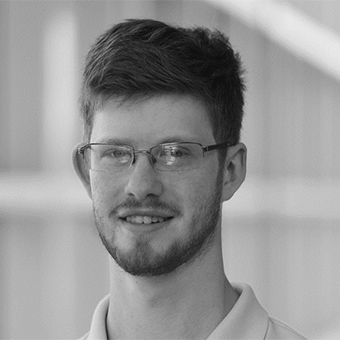Noah Somberg
 Dolnik/Epstein Laboratories
Dolnik/Epstein Laboratories
Department of Chemistry
Brandeis University
Turing Pattern Formation on Biologically Inspired Growing Systems
Poster Abstract
Turing patterns, which appear as spots, stripes, or labyrinths, are ubiquitous in nature, from animal markings to desert vegetation. We study Turing pattern formation on two-dimensional growing systems. To produce Turing patterns, we simulate the Lengyel-Epstein reaction-diffusion model numerically. In the simulations the Turing pattern domains grow via several biologically inspired meshing methods and at varying growth rates. The observed morphologies of the Turing patterns are relatively robust under changes in growth methods and highly dependent on growth rates. Slow growth leads to pattern formation from the interior of the domain, intermediate growth causes the pattern stripes to form perpendicular to the moving boundary, and fast growth results in stripe formation parallel to the boundary. The growth methods are also applied to a system with an exponential growth rate. Our preliminary results indicate pattern formation parallel to the boundary is heavily favored, whereas perpendicular growth occurs in only in a narrow range of parameters. As Turing-type mechanisms have been implicated in a plethora of biological systems such as cellular differentiation and limb development, these results may help future researchers identify growth mechanisms based on morphologies observed in nature.
Personal Statement
I’ve been working with the Epstein group for over a year, but before this summer I had only been able to do research part time. During the previous summer I worked 40 hours per week on top of my research to be able to stay on campus and work in the lab. Receiving the M.R. Bauer Fellowship for this summer allowed me to focus all of my time on my research, rather than only being able to work on it on the side. As I intend to pursue a Ph.D. in chemistry, this summer provided both an understanding of working in research full time, and will allow me to demonstrate to potential graduate programs that I am experienced in working on collaborative research projects, and committed enough to follow through with multiple investigations of the same subject.